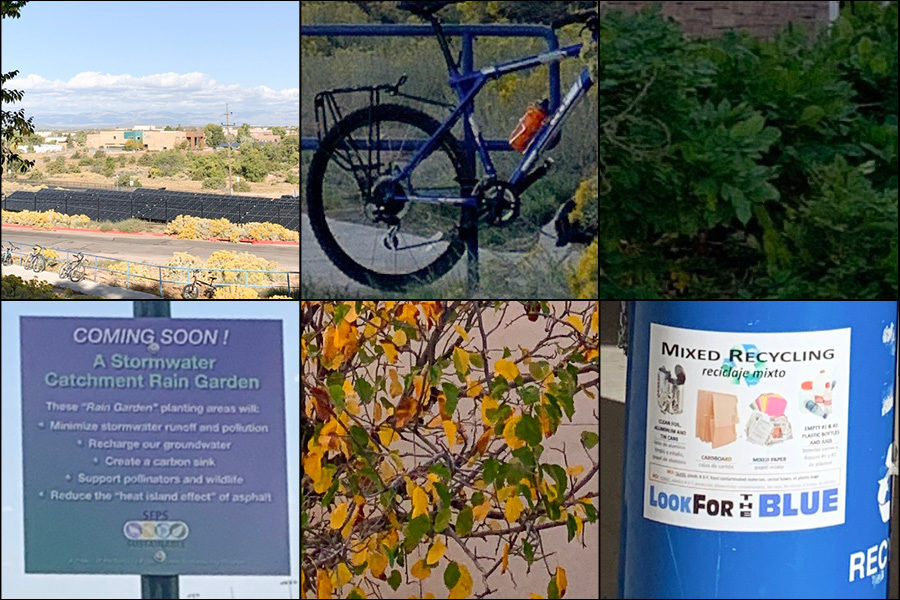Youth Activism and Student Involvement in Climate Change
October 14, 2019
Santa Fe Public Schools, as well as many influencers around the nation and the world, are coming up with ways for youth to become actively involved in advocating for solutions to climate change.
Environmental activist Greta Thunberg is currently making her way around the world, trying to spread awareness about the urgency of climate change. At just 16, she has successfully sparked widespread youth activism. Greta, who is from Sweden, has made speeches and appearances at many protests and conferences and has even made a TED Talk in which she makes a call to action.
Locally, the SFPS Board of Education is coming up with new ideas to get students involved in the issue. In a recent press release from Dr. Veronica Garcia, superintendent of SFPS, she introduces a proposal for a resolution to climate change that was presented by Kate Noble, president of the BOE, titled, “Call to Climate Change Action: A Resolution to Support Our Youth in their Declaration of a Climate Emergency and Call for Action.”
The proposal states that it should be considered crucial and significantly important to become more involved in climate issues, saying she “believe[s] it is vital to advocate for climate action leading to climate restoration, in order to address one of the greatest threats facing communities throughout the world.’’
In the proposal, Noble brings attention to BOE Policy #542, which advocates for the need to respond to climate change and related issues. This policy is specifically aimed at encouraging the superintendent to create a realistic plan for sustainability in the district.
In relation to Policy #542, certain schools in Santa Fe were given the opportunity to participate in the climate strike held at the Roundhouse on Sept. 20. Santa Fe High School was one of the several schools handed this opportunity. [See related story, “Eyewitness Account: Youth United for Climate Crisis.”]
The proposal for reducing climate change also makes a significant point about the impact that climate change has on students: “Children represent a particularly vulnerable group, because greenhouse gases emitted into the atmosphere will continue to accumulate over the coming decades and will profoundly impact our current students throughout their lives, as well as the lives of future generations.”
During the climate strike, students and other participants chanted around the Roundhouse, advocating for action. Groups of people also marched to the New Mexico Oil and Gas Association office, demanding better ways to reduce the climate impact of oil production. Groups of students were also invited inside the Roundhouse to listen to music performances and to hear members of Youth United for Climate Change Action speak.
The climate strike and the move toward involving students and school districts in advocacy will likely lead future generations to become more active in this worldwide issue.
In addition to Policy #542 and the impact of the nation-wide climate strike, the National Education Association is proposing ideas for teachers to enlighten students about climate change through the use of academics.
By creating more classes that teach students about the impacts and possible resolutions for climate change, students can become more involved. Schools can also enforce policies or promote the idea of reusing and recycling items for more sustainability.
Some other ideas toward helping reduce climate change are encouraging schools to become ENERGY STAR approved (for saving energy), reducing transportation emissions by encouraging students to walk or ride a bicycle to school, and creating more clubs and extracurricular activities that contribute to promoting the sustainability of our planet.
Youth United for Climate Change Action can be reached at this link: https://www.youthunited4climatecrisisaction.org/?utm_campaign=7944fe12-291b-4aed-8e01-03c0e7bae02a&utm_source=so&utm_medium=mail&cid=00000000-0000-0000-0000-000000000000


